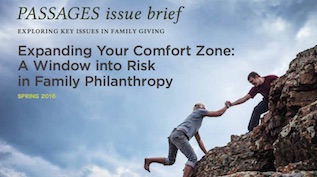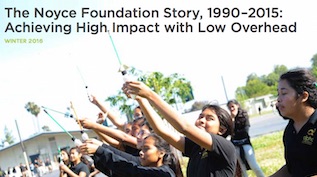Trends in Family Philanthropy: A Conversation with NCFP Fellows Katherine Lorenz and Doug Bitonti Stewart
Posted on December 8, 2016 by Virginia M. Esposito, Katherine Lorenz, Doug Bitonti Stewart

This webinar features two of the field’s emerging leaders, former NCFP Fellows Katherine Lorenz & Doug Bitonti-Stewart. Doug and Katherine will reflect on a variety of issues they have explored with NCFP and will discuss important trends in the field at large. Moderated by NCFP President Ginny Esposito, their conversation highlights issues and topics of interest to all family funders,… Read More








